Copyright 1935, David J Gibson & 2004, 2019 CanBooks
PART II
The Records of Assyria and Egypt
Assyrian Use of Regnal Years
There are three ways of counting the years of a king’s reign. 1.) The Exact Method, by which the year is reckoned from the date of the accession in one calendar year to the same date the next year. This is the way used in the Scriptures. 2.) The Inclusive method, by which the calendar year in which the king’s accession occurs is called his “first year” and the next calendar year his second, etc. 3.) The Exclusive method, where the next calendar year after the accession is named the first year. This last method is the one used in the Assyrian inscriptions. (This method is commonly practiced to this day where children have the “year of their birth” followed by their “first year.”)
Historical Contacts
There are a number of points at which Bible history and the records of Assyria touch one another, and these historical contacts are of major importance. They link the histories of the Assyrians and the Hebrews together, and make it possible to check our chronological calculations the one with the other. There are also points where Egyptian and Scripture records touch, but these are not quite so numerous nor so closely dates as the contacts with Assyria.
Egypt and Assyria were the two great nations of the period from Solomon’s reign to Hezekiah’s time, the one to the south of Israel, the other to her north. A large quantity of chronological material has been given to the world through the reading of the monuments and records of these two countries, and this makes three sources of information available: Assyrian on the one hand, the Egyptians on the other, while the Hebrew Scriptures occupy the central position, reaching out to come into contact first with one neighbor and then the other. This central position gives to the Scripture chronology a place of high importance - a sort of key position.
In comparing the Scripture chronology with the generally used date systems for Assyrian and Egyptian history, the following rule is followed to bring them into harmony. Where the Scripture chronology differs from the Egyptian, but fully agrees with the Assyrian, then the Egyptian dates are altered to make them agree with the other two; and where the Scripture differs with the Assyrian dates, but agrees with the Egyptian, then the Assyrian chronology is altered. The dates of the one are altered only at the combined evidence of the other two date systems against it. It will be found that in no place does the Scripture chronology differ from both the Assyrian and Egyptian dates at the one time, and thus it is supported by outside evidence its entire length from the time of Solomon to Hezekiah.
The historical contacts with Egypt (covering also the reigns of David and Solomon) are:
- A long-reigned Pharaoh (not named) who was the contemporary of David and Solomon. I Kings 6:14-22
- A Pharaoh (also not named) who was the father-in-law of Solomon, and took Gezer. I Kings 3:1,9:16
- Shishak of Egypt was a contemporary of Solomon and of Rehoboam. I Kings 11:40; 14:25-26 The Egyptians also record an invasion of Judah and Israel by Sheshonk I.
- Zerah the Ethiopian was contemporary with Asa’s eleventh year. II Chronicles 14:1,9
- So of Egypt was contemporary with Hoshea (about his sixth year). II Kings 17:4, 18:9
- Tirhakah the Ethiopian was contemporary with Hezekiah’s fourteenth year. II Kings 18:13. 19:9
The points of contact with the Assyrians and the Hebrews is tabled below:
Historical Contacts of Hebrews with Assyrians
| Scripture Record | Assyrian Records |
|---|---|
| 6th to 14th year of Shalmaneser III contemporary with Bir-idri (Ben-hadad II) of Damascus. | |
| 18th year and after of Shalmaneser III contemporary with Jehu of "mar Omri" (Israel), and with Hazael of Damascus. | |
| Early years of Jeroboam II contemporary with Shalman (Shalmaneser IV) Hosea 10:14 | |
| Later years of Jeromoam II contemporary with (?) Jareb of Assyria. Hosea v. 13 10:6 | |
| Menahem a contemporary of Pul of Assyria, who invades Israel II Kings 15:19-20 | |
| Pekah contemporary with Tiglath-pileser (IV) who invades the land II Kings 15:29 | Tiglath-pileser IV(?) receives tribute from Menahem. |
| The war of Pekah and Rezin against Ahaz contemporary with Tiglath-pileser (IV) who besieges and takes Damascus II Kings 16:5-9 | Tiglath-pileser IV takes Damascus in the reign of Reson, and overruns Beth-Omri (Israel) whose cities he had added to his territory on his "former campaigns." |
| Tiglath-pileser IV records the death of Pekah and the accession of Hosea over Beth-Omri (Israel) | |
| In the 7th year of Hoshea (4th of Hezekiah) Shalmeneser (V) begins the siege of Sameria II Kings 17:3-5, 18:9 | |
| In the 9th year of Hoshea (6th of Hezekiah) the city of Samaria taken by the Assyrians II Kings 17:6, 18:10 | In the 1st year of Sargon II the city of Samaria taken. |
| In the 14th year of Hezekiah Sennacherib invades Judah and takes all the cities except Jerusalem, II Kings 18:13 | Sennacherib in his 3rd campaign invades Judah, takes 46 cites and shits up Hezekiah in Jerusalem. |
The Later Contacts with Assyria
The Fall of Samaria, and Sennacherib’s Invasion
The dates for the fall of Samaria and Sennacherib’s invasion have already been dealt with in a former article. (See The Chronology of the Book of Isaiah) and these dates will be found in table II with this article. Shalmaneser V (727-722 BC) began the siege of Samaria in 723 BC. (II Kings 18:9) and Sargon II finished the siege, capturing the city in his first year, 721 BC. Sargon records this in his annals thus:
In the beginning of my reign, (722) and in the first year of my reign (721) … Samaria I besieged and took (three lines lost) 27,290 inhabitants I carried away, 50 chariots I collected there as a royal force … I set up again and made more populous than before. People from lands which I had taken I settled there. My men I set over them as governors. Tribute and taxes like the Assyrian I set over them. (Rogers, Cuneiform Parallels to the Old Testament, page 326, Barton, Archaeology and the Bible, page 427)
The scripture dates for the siege from the fourth to the sixth year of Hezekiah are from Hezekiah’s co-regency with Asa his father, which began in 727 BC while the dating for Sennacherib’s invasion as Hezekiah’s 14th fourteenth year, 701 BC. (II Kings 18:13) is reckoned from the beginning of his sole regency in 715 BC. This explanation removes the difficulties sometimes found in elating these events of Scripture to the Assyrian records and chronology and brings the two into agreement.
Pekah, Hoshea, and Ahaz, Contacts with Tiglath-pileser IV
Tiglath-pileser IV, according to the Assyrian records, was the predecessor of Shalmaneser V who began to reign in 727 BC. According to the Biblical chronology Hoshea reigned for nearly nine years, 729 - 721 BC (II Kings 17:1 cf, verse 6 “in the ninth year”) Thus Hoshea’s assassination of Pekah and accession to the throne of Israel in 719 BC (II Kings 15:20) comes in the reign of Tiglath-pileser. That this was so is confirmed by a small inscription of Tiglath-pileser’s, reading in part as follows:
… I received … Bit Khumra (i.e. Beth-Omri or Israel) … the entirety of its people, their goods to Assyria I carried away. As Pekah, their king, they had disposed, Hosea I established as king over them. Ten talents of gold … talents of silver I received as a present from them. (Rogers: Cuneiform Parallels to the Old Testament, p 321)
Now as earlier inscription, relating to the siege of Damascus, 733 - 732 BC is in part translated by Prof. R. W. Rogers thus:
[Bit-Khumria] (i.e., Israel) all of those cities, on my former campaigns I had added [to my territory] … into captivity had carried, [and] had left for him Samaria alone, Pekah their king [they had cast away] (Ibid, p 319)
As this inscription is recording a campaign carried out four years before Pekah’s death in 729 BC, the correctness of the last four words saying that Pekah their king “they had cast away” may be questioned. Pekah continued to live after this war, so the supplied words evidently should be omitted; some other ting was said of Pekah here, though what we do not know. When these words are left out then this record fully agrees with the Scripture chronology which makes Pekah a contemporary of Tiglath-pileser at this time. However, the agreement goes further than this.
The Scripture record shows us that after Uzziah’s death, Jotham reigned over Judah for sixteen years, 748 - 732 BC (II Kings 15:33). When he had reigned for eight years, Ahaz his son was made joint ruler in 740 BC, and thereafter less is heard of Jotham while Ahaz has control of the kingdom. During this joint rulership, about 735 BC, Rezin king of Syria and Pekah king of Israel united their forces in an effort to overcome Judah (II Kings 15:37). The news of this alliance was greatly disturbing to Judah, and Isaiah encouraged Ahaz to rely on Jehovah for deliverance (Isaiah 7:1-12). Ahaz gave but little heed to the prophet, and after meeting with a devastating defeat in battle (II Chronicles 28:5-7) he retreated within Jerusalem, where Rezin and Pekah besieged him but could not overcome him completely. (Isaiah7:1; II Kings 16:5) Then Edom invaded Judah from the south, and the Philistines in alliance with Israel and Syria pressed in from the west. So Ahaz, either late in 735 or early in 734 BC sent tribute (Tiglath-pileser IV records receiving tribute from “Jehoahaz of Judah” Rogers; Cuneiform Parallels of the Old Testament p 322) and urgent appeal for aid to Tiglath-pileser IV of Assyria through his veracious appetite for more tribute greatly distressed Ahaz. (II Chronicles 27:30) (II Kings 16:7-8; II Chronicles 28:16-18) Tiglath-pileser promptly responded and the eponym list gives us the dates of the ensuing campaign, while the king’s wall tablets supply many details of the war. The Assyrians quickly overran the kingdom of Israel, taking all of the cities apparently (except Samaria), and invaded Philistia in 734 BC, after which he turned on Damascus the capital of Syria and besieged it two years, 733 - 732 BC. (Ibid pp 235 - 236, 317, 320)
Damascus was taken, as both the Scripture and the inscriptions tell us, the Bible adding that Rezin was slain (II Kings 16:9). In all this we find perfect harmony between the Biblical history and the records of Assyria, each supplementing the other.
In recording this campaign, Tiglath-pileser remarks in the quotation given above, that the cities of Israel which he then took, he had added to his territory on his “former campaigns.” One of these is evidently the campaign mentioned in II Kings 15:29; “In the days of Pekah king of Israel came Tiglath-pileser king of Assyria, and took Djon and Abel-beth-maachah, and Janoah, and Kedesh, and Hezor, and Gilead, and Galilee, all the land of Naphtali, and carried them captive to Assyria.” This campaign was evidently in 738 BC when, as the eponym list informs us, Tiglath-pileser made an expedition into the west and “the city of Gullani captured.” (Ibid p 235)
Thus far we have touched upon no less than six points of historical contacts, in the period 738 - 701 BC, where we find the chronology and records of Assyria fit perfectly with Scripture history. These points are:
- 738 when Tiglath-pileser took parts of Israel during Pekah’s reign
- 733-732 when the same Assyrian king responded to Ahaz’ appeal and took Damascus
- 729 when the Assyrians recorded the death of Pekah and the accession of Hoshea
- 723 when Shalmaneser was the king who began the siege of Samaria
- 721 when Sargon took the city,
- 701 when Sennacherib invaded Judah.
(These will be found printed in italics in Table II)
To those who are of that skeptical frame of mine, which more readily believe the clay tablets of Assyria than the inspired Word of God, this perfect harmony must prove that at least this portion of the Bible chronology is most reliable.
This completes the later historical contacts of the Hebrews with the Assyrians, and next we turn to the contacts with Egypt.
Historical Contacts with Egypt
Contacts with Tirhakah and So, Kings of Egypt
Tirhakah, king of Ethiopia and Egypt, is mentioned in II Kings 14:9, and Isaiah 37:9 as a contemporary of Sennacherib’s invasion of Judah in Hezekiah’s fourteenth year, 701 NC. But the date given for the accession of Taharka (or Tirhakah) by Prof. J. H. Breasted is 688 BC, (Breasted, A History of the Ancient Egyptians, pages 378 - 436) which is thirteen years too late to agree with Biblical date. Carious methods have been resorted to, to force the Bible into agreement with the later date for Tirhakah, such as clipping the Scripture account of Sennacherib’s invasion into two so as to make two invasions, the later war at a time more convenient to Egyptian chronologies. But even a skeptical modernist should hesitate before lifting his shears to God’s Word as its harmony in this section with the Assyrian records proves its trustworthiness, besides which a little further investigation shows us that this is not the only case of this kind. Other contacts with Egypt show a similar differences in dates.
II Kings 17:3-4 tells us that Hoshea king of Israel, instead of sending his tribute to Shalmaneser V, as he had done each year, sent to SO king of Egypt for aid in rebelling against Assyria. As this was just before the siege of Samaria, 723 - 721 BC, So, by the scripture chronology, must have been reigning in 724 BC. It has long been recognized that the name “So” corresponds with “Shabaka” the name of the first king of the twenty-fifth dynasty of Egypt. But again, the date for the accession of Shabaka, which was twenty four years before Tirhakah, is 712 BC (Breasted, A History of the Ancient Egyptians, pages 374, 435) which is at least twelve years too late to agree with the scripture date. This is significant, for if we raise the dates of these two kings, Tirhakah and So, by thirteen years we would have harmony between the Egyptian chronology and the scripture, and the significance is increased when, as will be shown later, it is necessary to raise the Egyptian dates by the same amount right back to the time of Solomon before we have full agreement of dates. Hence it is taken for granted that Tirhakah’s reign should be lengthened by thirteen years to bring about this agreement with those Biblical dates which are so amply upheld by the Assyrian records. Then the accession of Tirhakah comes in 701 BC, in harmony with the scriptures account which describes him as taking part against Sennecherib in that year, and the accession of Shabaka or SO falls in 725 BC, a year before Hoshea is recorded to have sent to him for help against Shalmaneser V, thus bringing harmony of dates here also.
Contacts with Shishak and Zerah
The Biblical Shishak king of Egypt is the Sheshonk I of Egyptian history, founder of the twenty-second dynasty, and in the Scripture narrative he was contemporary with the last part of Solomon’s reign (I Kings 11:40) and also invaded Palestine in the fifth year of Rehoboam king of Judah, 957 - 940 BC (I Kings 14:25-26; II Chronicles 12:2-9_. In the Karnak temple at Thebes a record has been read confirming Sheshonk’s invasion of Palestine, a number of the cities of both Judah and Israel, being named as taken by him. (Barton, Archeology and the Bible, page 417 - 418).
Zerah the Ethiopian, who invaded Judah in the reign of Asa (II Chronicles 14:9-15) is generally identified with Osorkon I, successor of Sheshonk I. The invasion is stated to have been after Asa had reigned ten years in peace (II Chronicles 14:1). Whether these ten years were during Asa’s joint regency with his father Abijam or during his sole regency, is not definitely declared, but the former probably is the case, since all the dating in II Chronicles 14-16:10 appear to be uniformly reckoned from the beginning of his co-regency, ie, from 939 BC. This would place the war with Zerah ten or eleven years after Abiham’s war with Jeroboam I of Israel (II Chronicles 13:3-20) leaving full ten years of peace between the two wars, 938 - 927 BC.
Thus it may be seen that, by the Scripture chronology, the reign of Sheshonk I (Shishak) should begin not later than 98 BC, (the year before Solomon’s death, and last at least until 953 BC, the fifth year of Rehoboam, and Osorkon I (Zerah) should be reigning in 927 BC, the eleventh year of Asa’s co-regency with Abijam. By the Egyptian chronology the dates for Sheshonk I, are 945 - 924 BC, and Osorkon I 924 - 895 BC. (Breasted, A History of the Ancient Egyptians, pages 360, 364, 433) Here again the Egyptian dates are too late to agree with the Bible chronology, thirteen years in the case of Sheshonk, and three or more in the case of Osorkon. This is the same difference as was founded in the dates for Tirhakah and so (Shabaka) and is additional evidence that Tirhakah’s reign must be lengthened by thirteen years to bring the Egyptian dates all into harmony with the Bible chronology. When the dates are thus raised, we have:
Sheshonk I (Shishak) … 958 - 937 BC
Osorkon I, (Zerah) …… 937 - 908 BC
These changed dated fit perfectly with the Bible chronology, Sheshonk I being contemporary with the last year of Solomon’s reign, 958 - 957 BC., and he was reigning in Egyptian the fifth year of Rehoboam, 953 BC, just as the Scriptures state. And Osorkon I all through his reign was a contemporary of Asa, who ruled 937 - 887 BC, thus agreeing well with the date for Zerah’s invasion of Judah in 927 BC.
Contacts with the Pharaohs Contemporary with David and Solomon
Two Pharaohs are mentioned in the early part of the First book of Kings, neither of whom are named. The later one was a contemporary of Solomon, and also his father-in-law (I Kings 3:1; 7:8; 9:16,24, 11:1, II Chronicles 8:11). The earlier Pharaoh befriended Hadad the Edomite, and was a contemporary of both David and Solomon (I Kings 11:14-22)
Although the Bible does not definitely so state, it is naturally understood that but one Pharaoh is spoken of in the account of Hadad’s kindly reception at the Egyptian court, and both David and his general, Joab (I Kings 11:21-22). Granting this, it becomes a point for inquiry if there was a Pharaoh at this period whose length of reign will fit these conditions. To enquire into this it is first necessary to determine the dates by the Bible Chronology for David and Solomon.
Solomon reigned forty years (I Kings 11:42) as did also his father David (I Kings 2:11). As Solomon’s death occurred in 957 BC, his forty year reign dates 997 - 957 BC. But there are no less that three starting points for Solomon’s reign, and we have no sure means of knowing which of the three is to be dated as 997 BC. His forty years of reign may have begun when David first made Solomon co-king, (I Kings 1:29-39, 43,46-48, I Chronicles 23:1) or the second time this was done (I Chronicles 29:22-24) or his reign may have been reckoned from David’s death (I Kings 2:10-12). If it is supposed that Solomon’s forty years began with the first time he was anointed king, we still have no way of telling at which of the three events David’s forty years ended, thus leaving us in some uncertainty concerning the dates for David’s reign. However, Solomon began to build the temple in his fourth year, which reckoned from the beginning of his forty years (997) would be 994 BC (I Kings 6:1), and it would seem certain David died before this. The overlapping of their reigns was therefore not great, probably not more than two or three years. So if it be supposed that David made Solomon king the second time in 995 BC, after he himself had reigned forty years, and that his death was shortly after this, early in 994 BC, we shall have dates sufficiently close for the purpose of dating Hadad’s stay in Egypt.
If David completed his forty years in 995 BC, the beginning of his reign, when he was accepted as king by the tribe of Judah, would accordingly be 1035 BC. He reigned first in Hebron for seven years and six months, (II Samuel 2:11), that is, until 1027 BC, after which he ruled from Jerusalem (II Samuel 5:3-6). His subjection of Edom, when Hadad fled to Egypt, is recorded in II Samuel 8:13-14; I Chronicles 18:12-13; and Psalm 60 (title). About six or seven years may be allowed for the intervening events - the building of David’s palace, the wars with the Philistines, the three months lapse after starting to bring the Ark to Jerusalem, the wars with Moab and Zobah, etc. This brings us down to 1020 BC, as the approximate date for Hadad’s flight from Edom to escape from Joab, David’s general, (I Kings 11:14-18). As Hadad sojourned in Egypt until after the death of David and Joab about 994 BC, his stay lasted about twenty-six years, which as pointed out previously, was evidently all within the reign of one Pharoah. Was there a Pharaoh whose reign was this long and which covered the dates 1020 - 994 BC.
But one king of the twenty-first dynasty of Egypt will answer to these requirements, Amenemopet, who reigned about fifty years. The last four kings of this dynasty, the immediate predecessors of Shshonk I, are set out below, giving both Breasted’s dates and those thirteen years earlier in accordance with the change in teh Egyptian chronology already found necessary.
## *FOUR COLOUM TABLE TITLE**
| KINGE | Years reign | Breasted, BC | 13 years earlier(BC) |
|---|---|---|---|
| Paynozem | 40, (+X) | 1067 - 1026 | 1080 - 1039 |
| Amenemopet | 49, (+X) | 1026 - 976 | 1039 - 989 |
| Siamon | 16, (+X) | 976 - 958 | 989 - 971 |
| Pesibkhenno II | 12, (+X) | 958 - 945 | 971 - 958 |
Amenemopet reigned more than the required twenty-six years, and covered the period 1020 - 994 BC, Hence as his reign chronologically answers to the account of Pharaoh of I Kings 11:14-22, who sheltered Hadad, and there seems no good reason to reject the identification, it is reasonable to believe Amenemopet was this Pharaoh.
Next we take up the Pharaoh whose daughter the wealthy Solomon married. The year when this marriage took place is not given, but I Kings 3:1 seems to place it during the building of the temple, for Solomon had her stay with him in Jerusalem while the temple, his palace, and the city wall were under construction. “And Solomon made affinity with Pharaoh king of Egypt, and took Pharaoh’s daughter, and brought her into the city of David, until he had made an end of building his own house, and the house of the Lord, and the wall of Jerusalem round about.” The building of the city wall is not dated, but the temple was begun in Solomon’s fourth year, 994 BC (I Kings 6:37-38) after which thirteen years were spent in building his palace, 987 - 974 BC (I Kings 7:1) It was sometime in those twenty years, 994 - 974 BC (I Kings 9:10) probably in the earlier part, that Pharaoh’s daughter was wedded to Solomon. Later, Pharaoh’s daughter moved from the city of David to the palace Solomon had built for her (cf, I Kings 7:8b; 9:24). This Pharaoh also made an expedition into Palestine, took Gezer, and gave it for a present to his daughter (I Kings 9:16). According to these passages this Pharaoh’s reign must have begun before or early in Solomon’s twenty-year building program, and the reign continued will on into the time of Solomon’s rule. The dates for Siamon, Amenemopet’s successor, fit here remarkably well. Siamon came to the throne in Egypt in 989 BC (see date list above), just two years before Solomon finished the temple structure in 987 BC, and his reign ended in 971 BC, three years after Solomon’s palace was finished in 97 BC. From this agreement of dates we may conclude that Siamon was the Pharaoh whose daughter Solomon married.
The points of contact with Egypt, during the reigns of David and Solomon will be found in italics on Table II, with the approximate dates.
We now have before us a period of 319 years, 1020 - 701 BC, in which Egyptian chronology and the Biblical accounts fit perfectly, if the one change is made by which Tirhakah’s accession date is raised thirteen years. This remarkable harmony is very strong evidence for the reliability for both sources of chronological date, and gives us good reason to believe that our Bible chronology is fully correct.
Click here for Table II which contains a Chronology Table of the events listed in this article
Part I of this study: Bible Chronology from Solomon to Hezekiah (Part 1)
In Part III of this study, the Bible Chronology will be compared with the Babylonian dates.





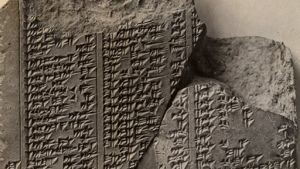



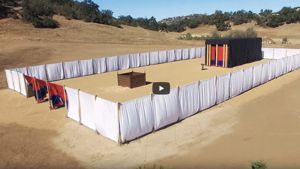
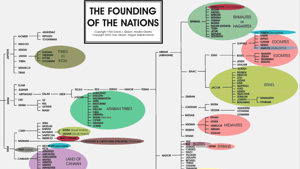

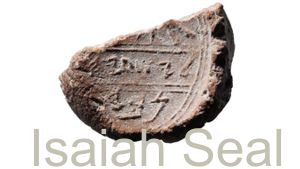
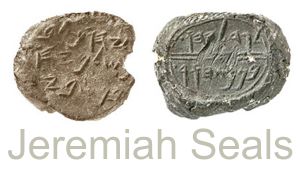







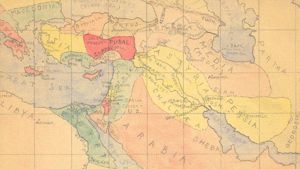

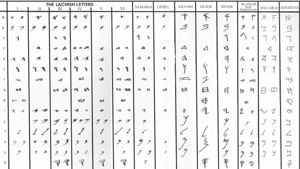
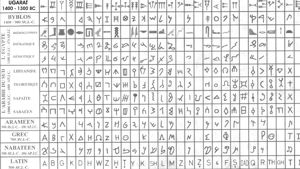
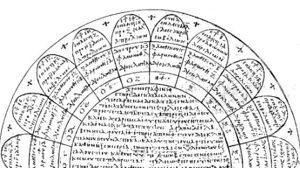
Page Discussion
Membership is required to comment. Membership is free of charge and available to everyone over the age of 16. Just click SignUp, or make a comment below. You will need a user name and a password. The system will automatically send a code to your email address. It should arrive in a few minutes. Enter the code, and you are finished.
Members who post adverts or use inappropriate language or make disrespectful comments will have their membership removed and be barred from the site. By becoming a member you agree to our Terms of Use and our Privacy, Cookies & Ad Policies. Remember that we will never, under any circumstances, sell or give your email address or private information to anyone unless required by law. Please keep your comments on topic. Thanks!